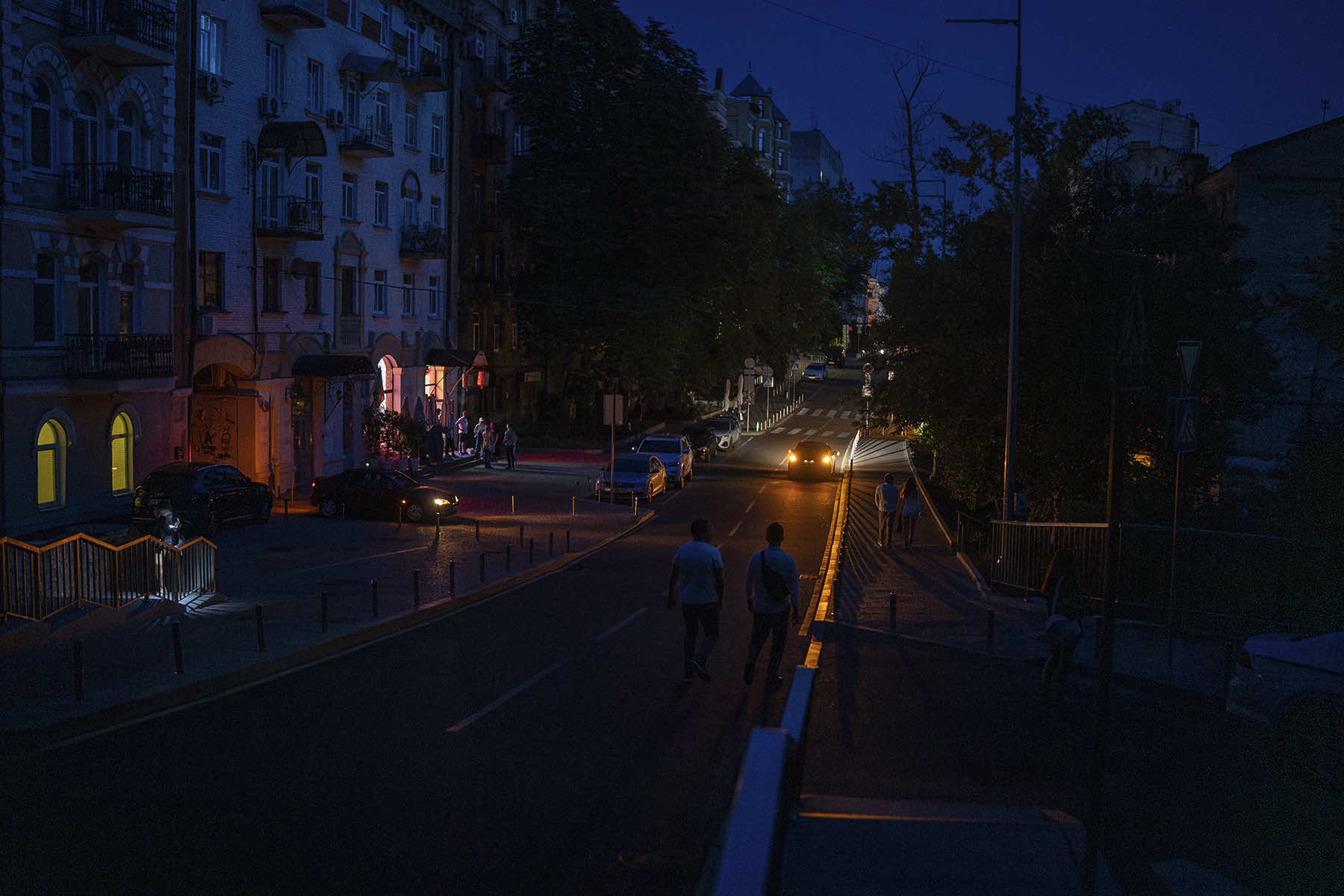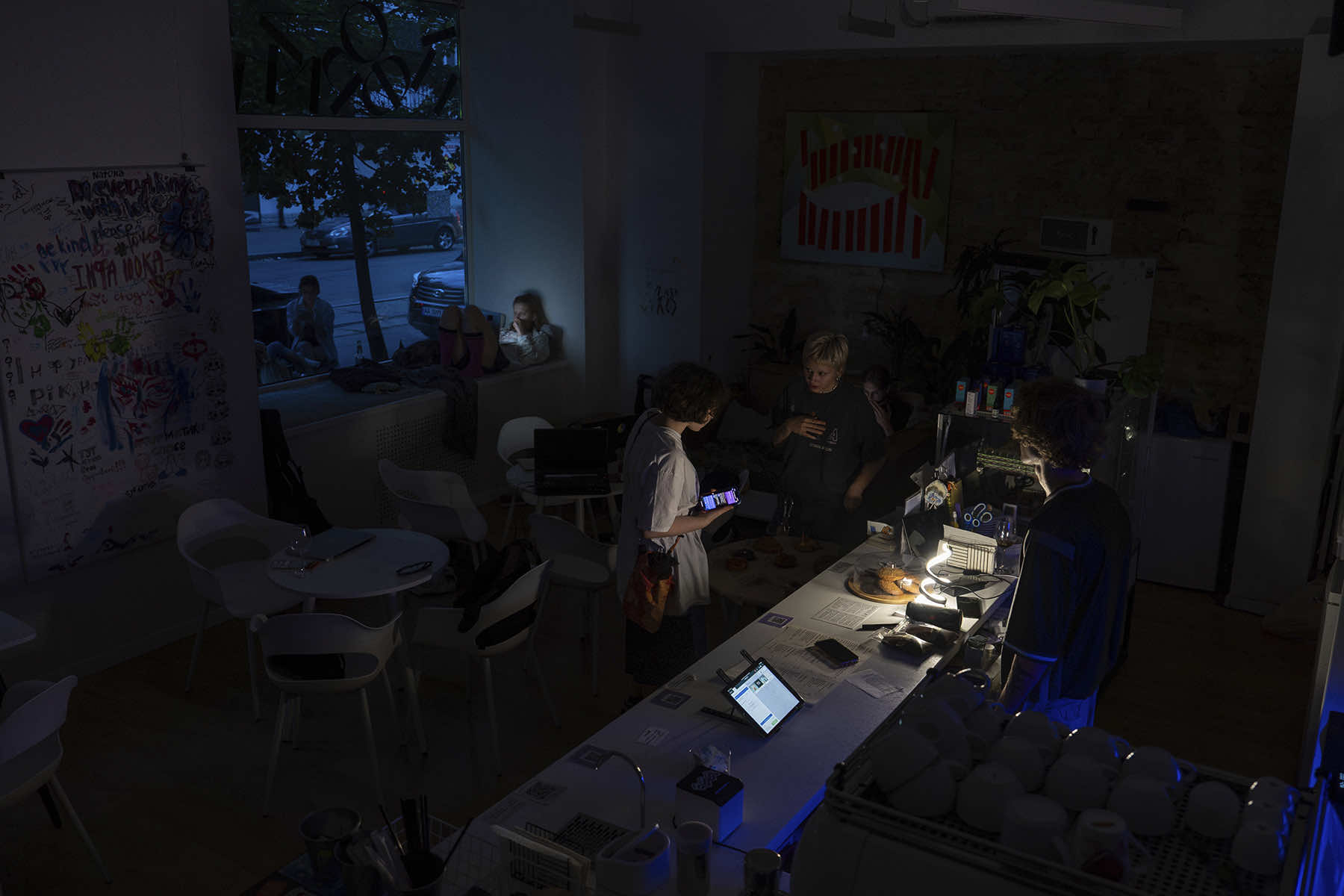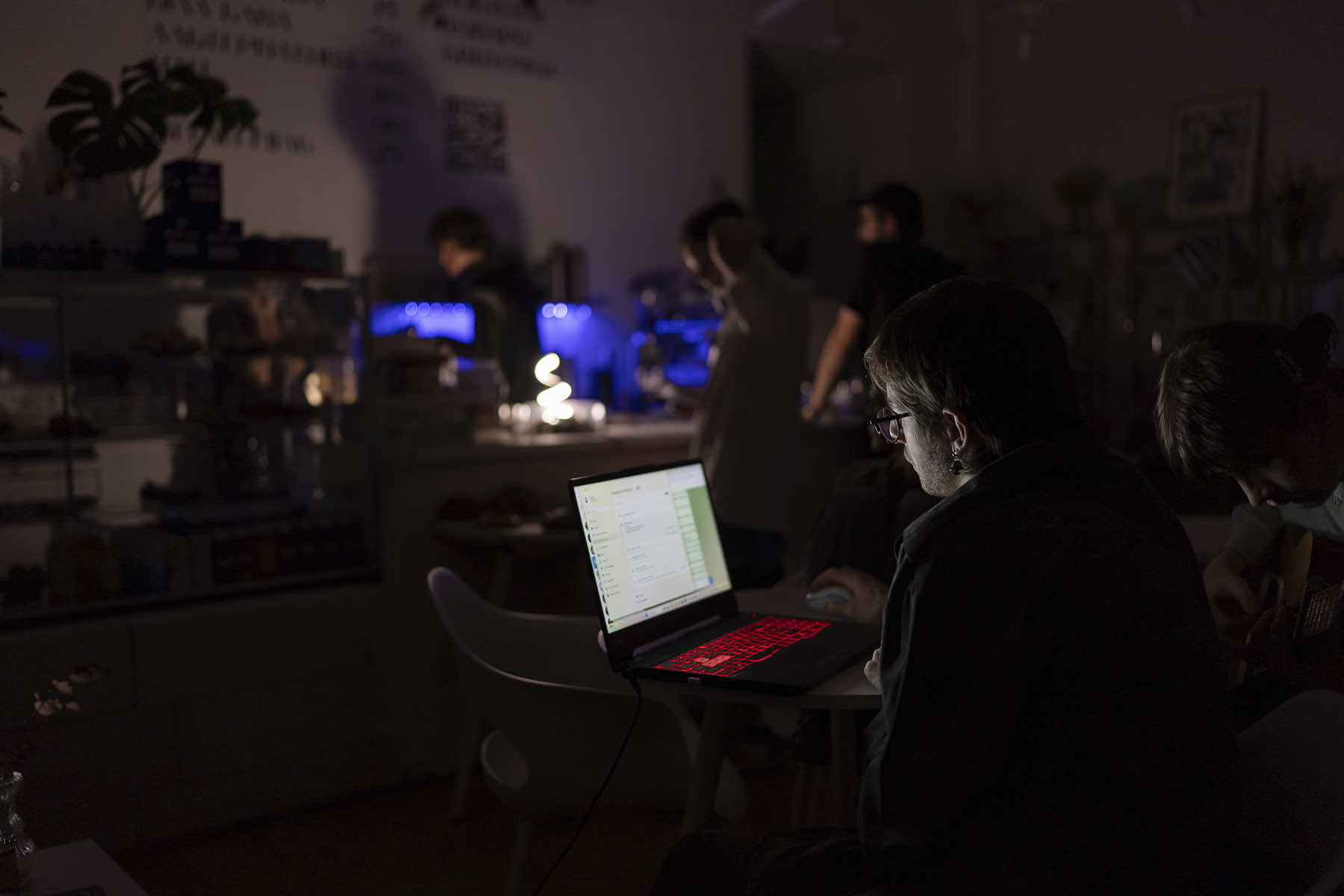
During daytime, entire districts of Ukraine’s capital are disconnected from the power grid to save energy. Traffic lights stop, choking traffic, accompanied by the constant rumble of generators installed outside cafes and shops.
Ukraine, including Kyiv, is struggling to cope with a new wave of rolling blackouts after relentless Russian attacks took out half the country’s power generation capacity.
Residents and businesses of Kyiv are adapting to the absence of electricity using generators, power banks, and flashlights and even recalculating their bathroom visits. Heavy damage inflicted to the country’s power system has left millions feeling uncertain about Ukraine’s ability to meet the national electricity demand after the warm weather months are over and the weather turns cold.
“I light my apartment as our grandparents used to — with candles and small flashlights,” said Rudoy, a 40-year-old insurance agent from Israel who relocated from Tel Aviv to Kyiv in 2023 after Russia launched its full-scale invasion of Ukraine on February 24, 2022.
He said that he wanted a new life despite the war — to live side-by-side with old friends and reside in a milder climate — but he hadn’t foreseen the inconveniences of living without power. Rudoy bought an apartment on the seventh floor of a newly built 25-story high rise with no gas system or water supply that’s wholly dependent on electricity.
“I have to adjust my life to the blackout schedules, otherwise it is impossible to live normally — not even to use a toilet at times,” said Rudoy.
A friend in a nearby district typically has power when he doesn’t, which makes his life easier. Work often gets done at a cafe that has a generator, but there’s a catch.
“Even if you find a free table at a cafe nearby, working generators are very noisy and spread diesel fumes,” he said. “That’s why not many cafes that operate during blackouts are actually good to work in.”
Ukraine is struggling to meet electricity demand as systematic attacks on its power infrastructure have intensified since March, forcing utilities to ration household supplies over the last three months. The country’s top officials repeatedly called on allied countries to provide more air defense systems to protect its power plants from Russian missiles and drones, but tangible damage had already been inflicted.
The Pentagon announced on June 21 that Ukraine’s military was allowed to use longer-range missiles provided by the U.S. to strike targets inside Russia across more than just the front lines near Kharkiv if it is acting in self-defense.
President Joe Biden initially loosened the restrictions on how Ukraine could use U.S.-provided munitions to give it another option to defend the eastern city of Kharkiv from a relentless barrage of Russian missiles. Since the beginning of Russia’s 2022 invasion, the U.S. had maintained a policy of not allowing Ukraine to use the weapons it provided to hit targets inside Russia for fear of further escalating the war.
Russia has been firing on Ukrainian targets from inside its border, treating its territory as a “safe zone,” said Major General Pat Ryder, Pentagon press secretary.
“As we see those forces conducting those types of operations from across the border, we’ve explained Ukraine can and does have the right to fire back to defend themselves,” Ryder said.
Additionally, they can use air defense systems supplied by the United States to take Russian planes out of the sky, even if those Russian planes are in Russian airspace, if they are about to fire into Ukrainian airspace.
The White House also announced on June 20 that it was rushing delivery of air defense interceptor missiles to Ukraine by redirecting shipments planned for other allied nations, as Washington scrambles to counter increased Russian attacks on Ukrainian energy infrastructure.
The U.S. was already sending Ukraine a consistent stream of interceptors for its air defense systems, including for the Patriot missile batteries and the National Advanced Surface-to-Air Missile Systems, or NASAMS.
The blackouts in Kyiv are the worst since the early months of the war in 2022 when Russian strikes on the country’s power grid led to major winter-time blackouts that led to authorities setting up communal heating areas and hundreds of emergency points where residents could drink tea, recharge their phones and get help.
“As of today, due to missile and drone attacks, we have lost 9.2 gigawatt of electricity (generating capabilities),” Ukrainian Prime Minister Denys Shmyhal said in early June. Despite having the capacity to import 2.2 gigawatts of electricity from European countries, Ukraine is importing 1.7 gigawatts, Shmyhal said.
Apart from direct imports, Ukraine is working to attract foreign investment to its private energy sector. At a summit in Berlin this month, Ukraine presented investment projects that could enable additional capacity of 1 gigawatt, said Volodymyr Kudrytskyi, the head of power utility Ukrenergo.
But in the short-term, Ukraine’s readiness before next winter looks highly uncertain considering the damages to its energy system, the feasible outlook for reconstruction, and electricity demand.
Constant blackouts bring disruption to many city residents’ daily rituals. Official power outage schedules published regularly by Ukrainian energy operators make it easier to plan the day. But energy companies often resort to unscheduled emergency blackouts when the city overconsumes electricity at the peak hours.
The circumstances force businesses and households to rely on alternative sources of electricity and light to get through a day as the summer heat makes more and more people use air conditioners. And many are worried the situation could get even worse.
Small businesses don’t always keep up, with the energy situation rapidly changing every week.
Oleksandr Solovei, the 25-year-old owner of Informatyka coffee shop in Kyiv, just plans to buy a generator, which typically costs around $1,000, to keep his business open during blackouts.
In the meantime, he must improvise. “We prepare hot water in advance, to cook matcha and teas. Cooking coffee at times like this is impossible. The coffee machine consumes too much energy,” said Solovei.
A fiber-optic internet cable and a power bank that keeps the router on attract patrons to Informatyka, where they can work on their laptops. Still, customers have thinned out since the blackouts began.
“We think the situation will get worse (by winter),” Solovei said. “We already plan to buy a generator, powerful enough to brew coffee, light the space, and charge the devices of our visitors. We are preparing for a hard winter.”


















